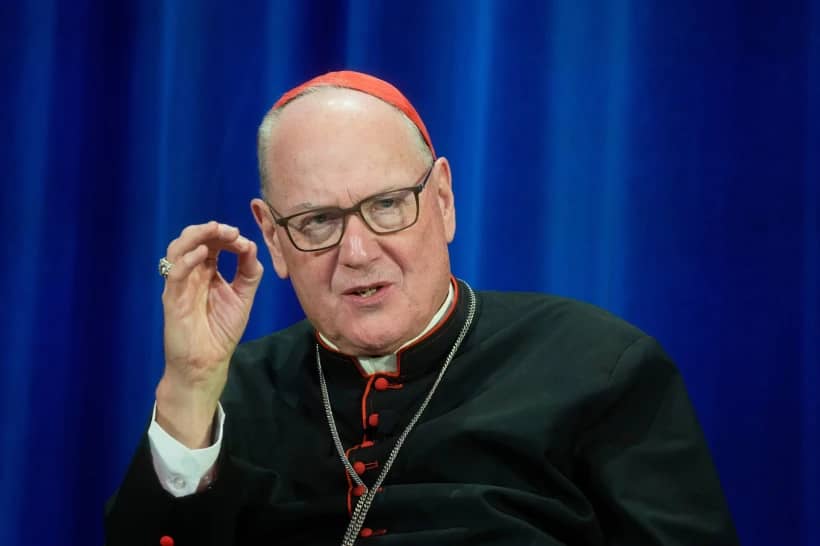ROME – Today, US President Joe Biden is expected to sign a $1.9 trillion Coronavirus relief plan into law following passage by the House and Senate, marking the most ambitious economic stimulus package proposed by an American president since the Johnson administration in the 1960s. It’s the capstone of Biden’s first 100-day agenda, and a remarkable accomplishment by conventional political standards.
In trying to explain how it happened, Ezra Klein of the New York Times recently offered an intriguing interpretation: Basically, Klein argued, Biden has swapped celebrity for policy.
Reviewing mainstream media coverage, Klein found that even well after the election, Trump has featured in about twice as many headlines as Biden, and he’s also still well ahead in Google searches. Right now, the typical American could go days without hearing anything personal from, or about, the man who’s actually their president, but their former commander-in-chief remains nearly ubiquitous.
At the core of this phenomenon, Klein suggests, is a conscious Biden strategy, rooted in a key conclusion of contemporary political science: To wit, negative polarization is now the most powerful force in public life. People aren’t always motivated to support an idea because someone they like supports it, but they’re almost invariably driven to oppose an idea if someone they dislike endorses it.
By avoiding making himself the center of attention – no one in the White House, for instance, has referred to the stimulus program as the “Biden Plan” – the president has reduced the incentive for conservatives to reflexively dismiss his policies. Since polls show the stimulus measure is running about 10-20 points ahead of Biden himself in terms of favorability, it seems to be working.
Biden spokespersons call the strategy “turning down the temperature.” It comes to mind in thinking about the state of the Francis papacy, which marks its eight-year anniversary on Saturday.
Seemingly reinvigorated by the Coronavirus crisis, the 84-year-old Francis still has an ambitious agenda for the Church and the world.
Internally, his to-do list features a long-simmering reform of the Roman Curia, a sweeping clean-up in money management, the fight against clerical sexual abuse, empowerment of women and laity, a more collaborative (“synodal,” to use his word) mode of decision-making, and more. Externally, the pope has laid out a vision for a post-Covid world that turns on a deeper sense of human fraternity and solidarity, economic justice for the world’s poorest peoples, protection of the natural environment and an end to armed conflicts.
One factor complicating achievement of this agenda is that negative polarization is a powerful force in Catholicism too. For better or worse, Pope Francis, like virtually all public figures of this era, is divisive. Among some Catholics, he inspires ardent support; among others, perhaps a relatively small but determined minority, he elicits reflexive skepticism and opposition.
In that light, perhaps Francis might consider stealing a page from the Biden playbook and take himself out of the equation, at least as much as his office and public responsibilities allow.
What might that look like? In general, it would seem to mean reducing his own public profile and allowing pieces of his agenda to be carried by others, whether these “others” are individual actors, groups, or institutions.
One might suspect that Coronavirus-related limitations would be an asset in reducing the pope’s profile, since it means no large-scale public events in Rome and limited international travel. However, the same limits apply to other public figures too, so in a relative sense they don’t do much to redistribute the spotlight.
Of course, the pope can’t set aside the demands of governance – he can’t stop naming bishops, or issuing decrees, or approving budgets, or any of the other things required to keep the Church running, all of which inevitably become news items.
However, he could avoid more unofficial means of gaining attention, such as granting interviews, appearing in documentaries, publishing books, making phone calls and sending letters that end up in the media, and engaging in “private” gestures which are obviously intended to be made public.
In the meantime, Francis could encourage others to push his priorities, whether that means Vatican officials (who are generally less well known and therefore less polarizing), bishops around the world, leaders of movements and religious orders, or other players on the Catholic scene.
Much like the Biden stimulus program, a good deal of the papal agenda enjoys strong public support. Pretty much everyone favors greater transparency and accountability, majorities back greater roles for women and laity, and, in a Church in which two-thirds of its membership now is in the developing world, much of the pontiff’s social justice agenda resonates broadly.
As in American politics, the polarizing dimension in Catholic conversation on these subjects often isn’t the content of a given proposal, but who’s behind it and who’s against it.
Over the past eight years, Pope Francis has shown himself adept at reading the signs of the times, gauging what the Church and the world need from him in a given moment.
What the Biden example suggests, however disanalogous the two cases otherwise may be, is that perhaps what the Church and the world may need right now from Pope Francis is simply less – less personality, that is, to make room for more policy.
Follow John Allen on Twitter at @JohnLAllenJr.
















